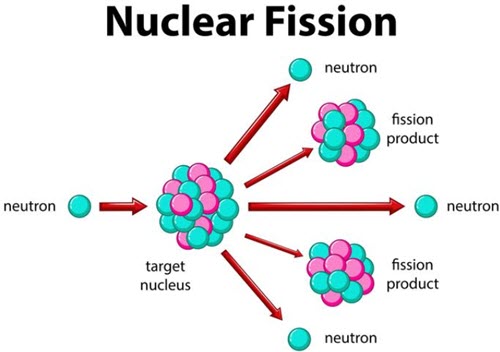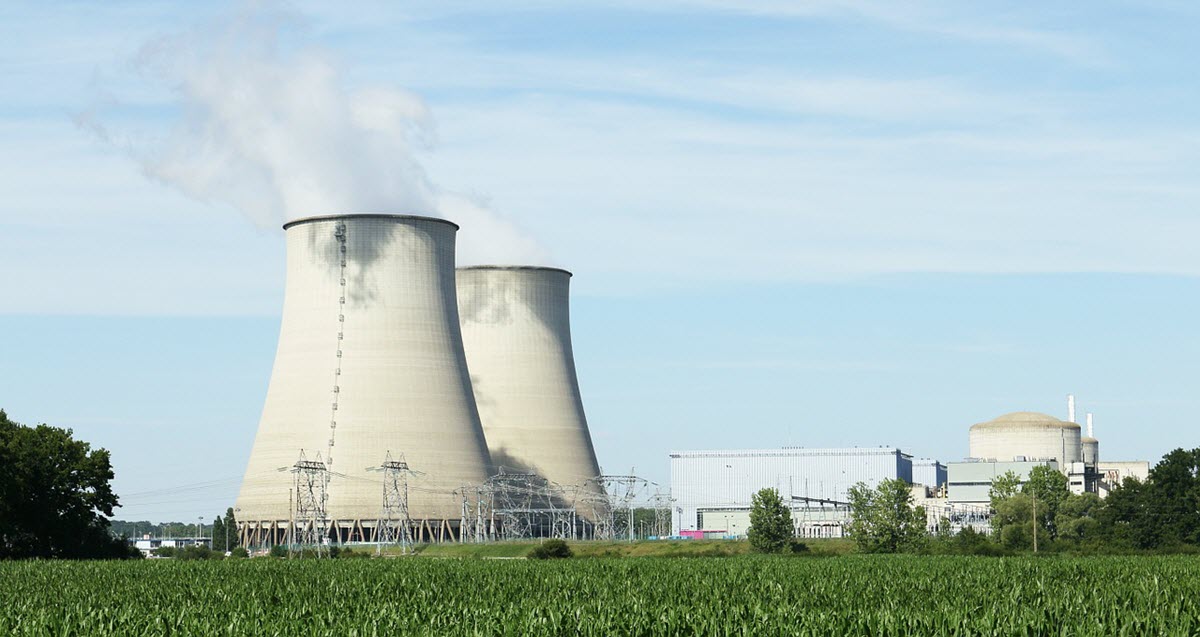What is nuclear fission?
In physics, nuclear fission is a nuclear reaction or radioactive decay process where the nucleus of an atom splits into smaller (and lighter) nuclei.
 The fission process often produces both free neutrons and gamma photons. For heavy nuclides, it is an exothermic reaction that can release huge amounts of energy, and this energy is what we put to use in a fission reactor at a nuclear powerplant and in nuclear weapons. Energy can be released both as electromagnetic radiation and as kinetic energy of the fragments.
The fission process often produces both free neutrons and gamma photons. For heavy nuclides, it is an exothermic reaction that can release huge amounts of energy, and this energy is what we put to use in a fission reactor at a nuclear powerplant and in nuclear weapons. Energy can be released both as electromagnetic radiation and as kinetic energy of the fragments.
It is possible to start a self-sustaining nuclear reaction by striking nuclear fuels with fission neutrons, because the nuclear fuels will undergo fission after being struck, and in turn emit neutrons.
The products that we are left with after a nuclear fission process are on average much more radioactive than the heavy elements that were used as nuclear fuel, and they will remain very radioactive for a significant amount of time. The use of nuclear fission, e.g. in powerplants and weapons, is therefore causing nuclear waste to form.
History
Nuclear fission of heavy elements was discovered in December 1938 by the German chemists Otto Hahn and Fritz Strassmann. The following month, it was explained theoretically by the Austrian-Swedish physicist Lise Meitner and the Austrian physicist Otto Robert Frisch.
Natural spontaneous radioactive decay
The fission process that we utilize in nuclear power plants is induced by a neutron. This is not the only type of fission in the world, however, since spontaneous radioactive decay that doesn’t require a neutron do occur without human meddling – especially in isotopes with a very high mass number. This type of spontaneous fission was discovered by Flyorov, Petrzhak and Kurchatov in Moscow in 1940.
Nuclear fission reactors

A nuclear fission reactor is a device used to start a self-sustained fission reaction and contain it. In nuclear power plants, nuclear fission reactors are utilized to generate electricity. Another use for nuclear fission reactors are propulsion – some submarines are propelled by an onboard nuclear reactor. Nuclear fission reactors are also utilized for research, for industrial production, and to produce radioactive material for weapons and medical treatments.
As of early 2019, the IAEA knows of 454 nuclear power reactors and 226 nuclear research reactors that are in operation.
Generating electricity in a nuclear powerplant
In a nuclear powerplant, the heat released by the fission process inside the reactor is passed through water or gas. This makes the water/gas run through steam turbines which turn electrical generator shafts, and this is how the electricity is generated.
Propulsion
On a submarine with a fission reactor, the first part of the process is the same as in a nuclear powerplant, but instead of only running an electrical generator the steam turbines will also drive the ship’s propellers.
Using the steam as a heat source
The steam generated can also be used directly as a heat source, e.g. by sending it out to buildings that need to be heated or to factories where it can be utilized for industrial processes that require heat.
Other uses
Some fission reactors are used to:
- Produce isotopes for medical use, e.g. for radiation thearpy.
- Produce weapons-grade plutonium.
- Produce isotopes for industrial use.
Research reactors are run for scientific research. As of early 2019, there were 226 nuclear research reactors listed with the IAEA.